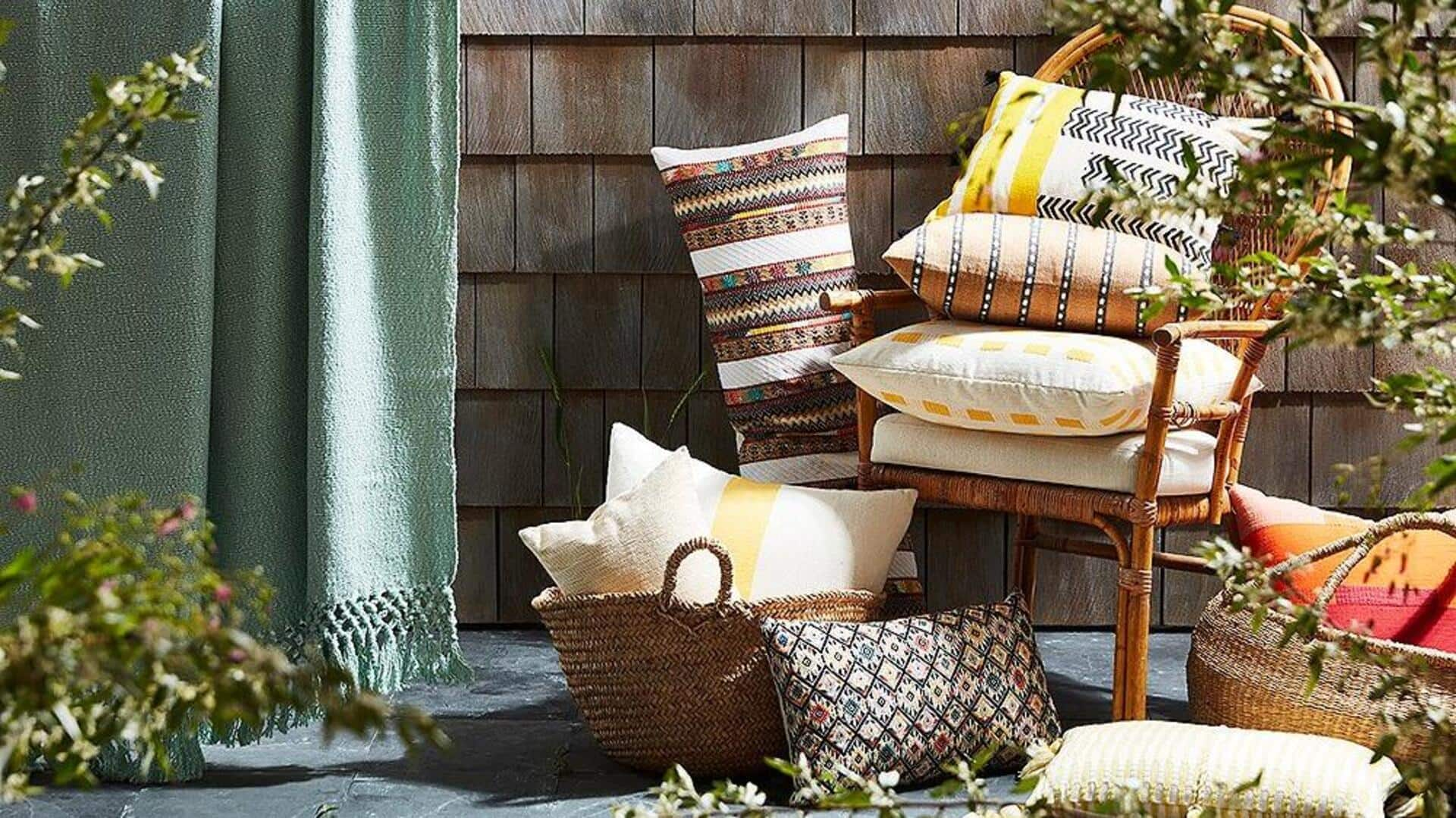
Elevate your space with artisan textiles
What's the story
Artisan textiles are gradually becoming a must-have in modern homes. The handcrafted pieces add a unique touch to interiors, combining traditional craftsmanship with contemporary design. They bring an array of textures, patterns, and colors that can make any room feel like a sophisticated haven. With more people opting for sustainable, personalized decor options, artisan textiles are an elegant solution that beautifies homes while supporting skilled artisans across the globe.
Texture addition
Incorporating textiles for texture
Incorporating artisan textiles is the best way to add texture to living spaces. Handwoven rugs, cushions, and throws make for excellent choices as they add layers to bring depth and interest into a room. Their tactile quality invites interaction and warmth to otherwise sterile environments. By opting for textiles with varied weaves or materials like cotton or wool, homeowners can create a balanced look.
Pattern play
Using patterns for visual interest
Artisan textiles often come with intricate patterns that can work as a statement piece in your interiors. From geometric shapes to floral motifs, these patterns add a zing to the space without making it too loud. Using patterned textiles on furniture or walls strategically can highlight certain zones in a room. This way you can have creative freedom in the design without clashing with existing decor elements.
Color harmony
Color coordination techniques
Color coordination is key when incorporating artisan textiles into modern homes. Choosing those pieces that complement each other color-wise ensures uniformity across the room. Neutral tones such as beige or gray make it easy for bolder shades from textile accents to pop without being overwhelming. Homeowners must keep the color scheme of their space in mind when picking artisan pieces to keep things balanced and unified.
Eco-friendly choice
Supporting sustainable practices
Choosing artisan textiles is a step toward sustainability, advocating ethical production methods, and reducing environmental impact. Most artisans employ natural dyes and locally sourced materials, which reduce pollution as compared to mass-produced options. Investing in these eco-friendly products allows consumers to contribute positively toward preserving traditional crafts while making environmentally conscious choices for their homes.